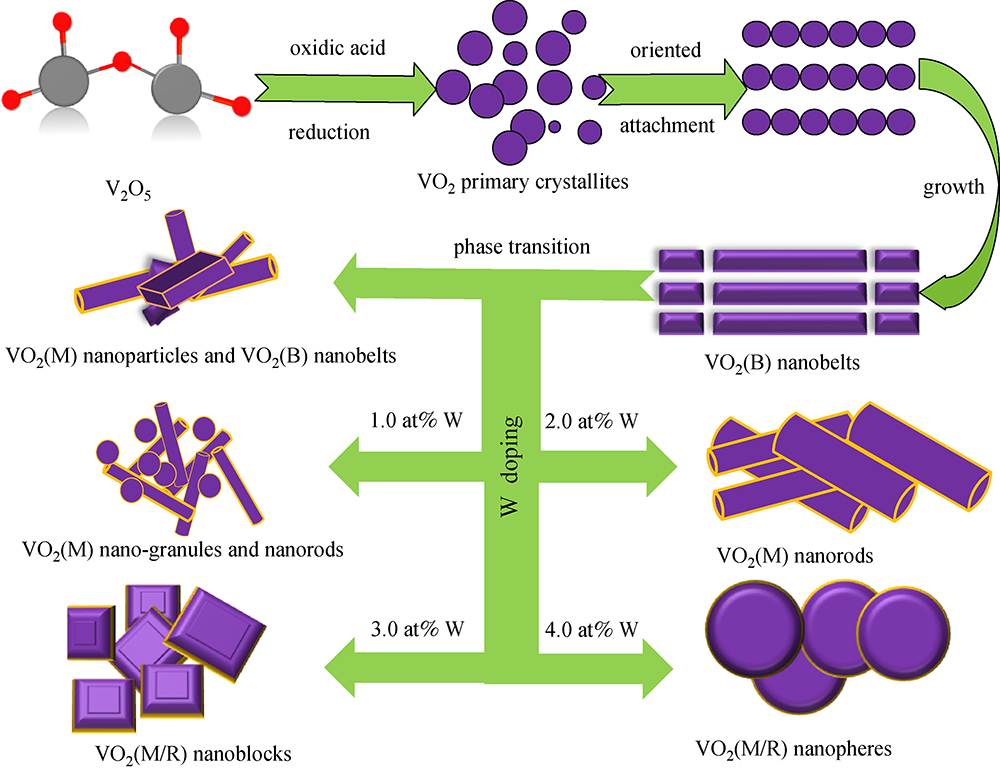1 Introduction
2 Experimental
2.1 Materials and characterization methods
2.2 One-step hydrothermal synthesis of VO2(M/R) nanoparticles
Tab.1 Contents of (NH4)5H5[H2(WO4)6] powder for different groups |
| W doping ratio/at%* | weight/g |
|---|---|
| 0 | 0 |
| 1.0 | 0.03758 |
| 2.0 | 0.07589 |
| 3.0 | 0.11274 |
| 4.0 | 0.15178 |
Note: * W doping ratio refers to the atomic percent of Watoms in the total of Wand V atoms in VO2 crystals |
3 Discussion
3.1 Doping efficiency of W atoms

Fig.2 Element mapping and surface spectrogram of VO2 nanoparticles prepared with the W doping ratio of 1.0 at%. (a) SEM images of nanoparticles. (b) Overall diagram of the key elements: yellow color for W element, red color for O element, and green color for V element. (c) W element. (d) O element. (e) V element. (f) Surface spectrogram of different elements in the range of 0–8 keV. Here, cps is counts per second |
Tab.2 Atomic percent of key elements in VO2 nanoparticles determined by EDS |
| nominal W doping ratio/at%* | actual W doping ratio/at%* | elements | atom% | doping efficiency/% |
|---|---|---|---|---|
| 0 | 0 | O V W | 64.33 35.67 0 | 0 |
| 1.0 | 0.91 | O V W | 66.74 32.96 0.30 | 91.0 |
| 2.0 | 1.47 | O V W | 63.82 35.65 0.53 | 73.5 |
| 3.0 | 2.16 | O V W | 65.36 33.89 0.75 | 72.0 |
| 4.0 | 2.72 | O V W | 64.74 34.30 0.96 | 68.0 |
Note: * Nominal W doping ratio refers to the atomic ratio of W atoms in the total of W and V atoms added to the mixture solution; actual W doping ratio refers to the atomic ratio of W atoms in the total of W and V atoms in the final products. |












